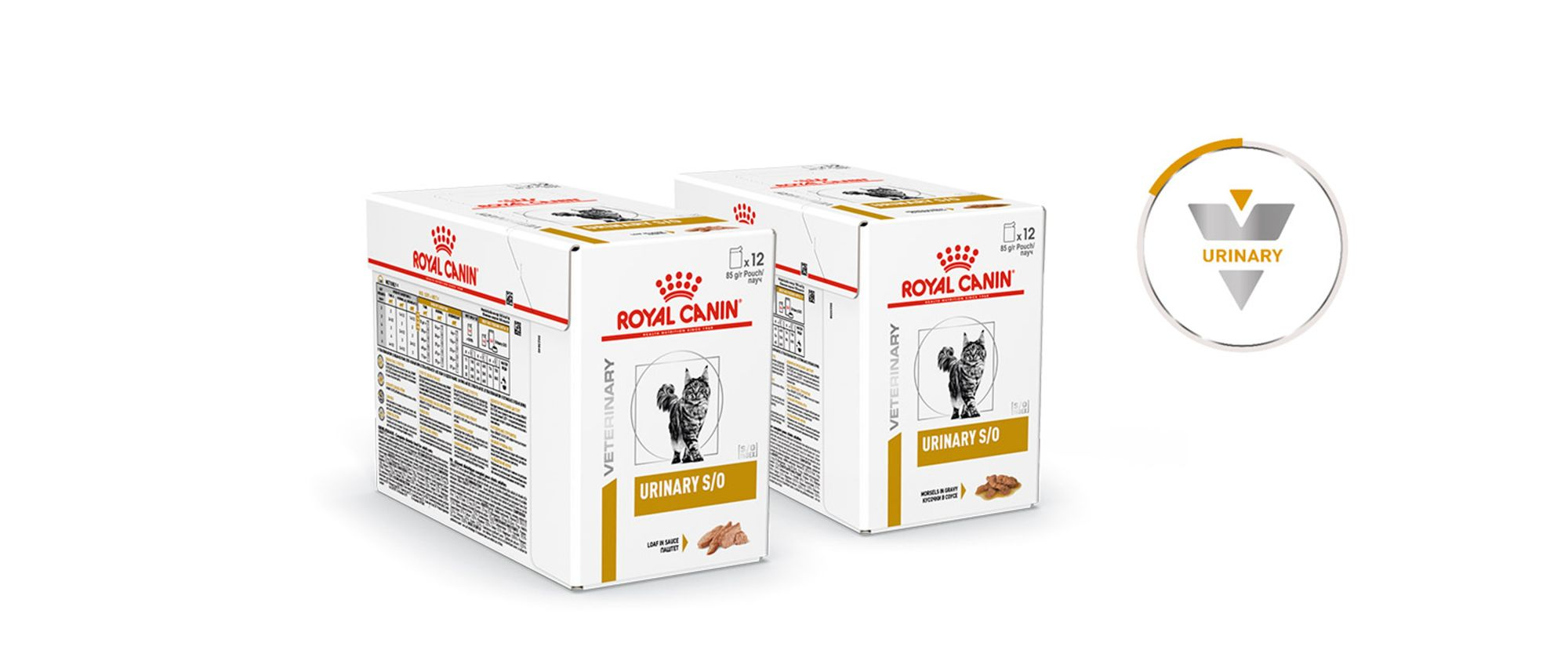Feline Urinary S/O
Article

Lower urinary tract disease can be diet-responsive¹. Nutritional management plays a primary role in the dissolution of struvite uroliths, so high palatability of specialised diets is important.
Let’s take a look at what palatability means and why it’s so important when it comes to cat’s eating habits and meal enjoyment.
Palatability
Palatability is the term used to describe how well an animal perceives the aroma, texture and taste of a food (in order of importance). Whilst smell is very important to a cat, the shape and texture are also equally as important. When approaching food, the first thing a cat does is smell it. If it passes the scent test, they will try a small bit of food. Then, texture (and shape, in some cases) will determine whether or not the cat will continue eating the food. Defining factors as to whether the cat enjoys the texture or not includes the way it breaks apart in the mouth, the size, and the moisture content. Let’s take a deeper look at the three main components of palatability: aroma, texture and taste.Aroma
Cats have a far more sensitive olfactory apparatus (sense of smell) than humans do, because they have twice as many olfactory receptors. This means their sense of smell is approximately fourteen times stronger than humans’. The aroma from food is especially necessary for a pet to start eating. If the odour is notably strong, that alone is enough to influence them, at least initially, to start eating a new food.Texture
The texture or ‘mouth-feel’ of a food is an important factor in its selection. Located in the mouth of a cat are pressure receptors and movement detectors which allow animals to judge a food’s hardness, cohesiveness, viscosity, elasticity and adhesiveness. Cats prefer food that is non-sticky and easy to crunch. Interestingly, cats also eat moist food at a quicker rate, whereas dry calorie-dense food is usually consumed at a slower rate.Taste
Cats can be known for being picky or fussy, and some cats will even refuse to eat and will consume below their recommended daily intake if the only food available is something they do not enjoy. Some things that can sway a cat’s perception of taste include aroma, consistency and temperature. Cats possess taste buds on their tongues that react favourably to substances classified as salty, tart or acidic. Cats do not appear to be attracted to sweet tasting substances.Do cats respond to food the same way that humans do?
Ultimately, they do not – they’re an entirely different species. Cats do not have the same eating preferences and dietary requirements as humans do, just as they have different nutritional requirements. The major differences between cats and humans in their response to food is that:
- Cats are much less concerned about the appearance, particularly the colour, of a food
- Cats are more influenced by its smell rather than taste
- Cats are better equipped to judge the quality and freshness of ingredients
- However, there are many human foods that are unsuitable for cats to eat, yet they will often still try to anyway.
Although similarities between the eating habits of cats and humans are few and far between, it’s important to be aware that they both:
- Develop individual preferences for certain ingredients and flavours
- Look for novel foods, but are wary of foods that are too different from those experienced previously and may need to be introduced to them gradually
- Cats should be fed food that fulfils their nutritional requirements, otherwise they will develop preferences for unhealthy human food, and become wary of eating cat food that is nutritious for them – making it more difficult than it would usually be to start them on a new diet
The importance of palatability can never be underestimated
Essentially, meeting all the criteria of a cat’s palatability is extremely important when it comes to feeding them an enjoyable, nutritious diet.Find out more about ROYAL CANIN® URINARY diets here.
¹Landsberg G, Milgram B, Mougeot I – Therapeutiv effects of an alphacasozepine and L-tryptophan supplemented diet on fear and anxiety in the cat. Journal of Feline Medicine and Surgery 2017, Vol. 19(6) 594-602. Food moisture content: Wet food ≈ 85%, Dry food ≈ 9%
Sign up to our newsletter
Be the first to hear all about our news, special offers and competitions too!
Like & share this page